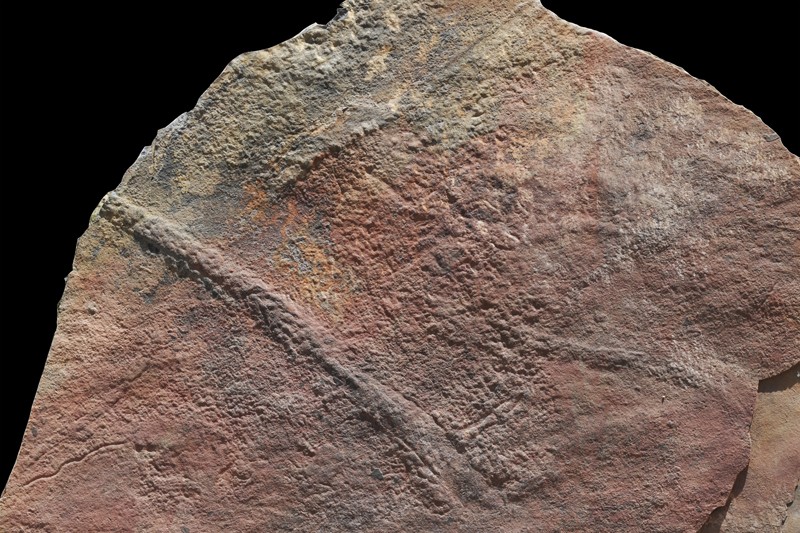The discovery of a new fossil worm shows that life developed symmetrical bodies and locomotion earlier than previously believed.

One of the geological periods in Earth’s history, the Cambrian, is famous for the rapid pace and huge scale of biological development it saw. In the so-called Cambrian explosion (of life), biology experimented with a stunning diversity of animal forms, setting some of the body plans still seen today.
The new fossil, which formed sometime between 551 million and 539 million years ago (in the Ediacaran period, just before the Cambrian), challenges the idea that the Cambrian explosion singlehandedly ushered in modern life.
Old tricks
Life in the Ediacaran was downright weird. Most animals living at the time don’t even use body parts and shapes that you would immediately recognize; most were also unable to move around, preferring to find a spot, bind to it, and make it home.
However, Cambrian life didn’t evolve from scratch — it evolved based on organisms living in the Ediacaran. Fossilized tracks were discovered from the Ediacaran, as well as one odd disk-like creature, but the two didn’t fit.
We now have a better idea of what was moving around in those primordial times. A new paper reports the discovery of Yilingia spiciformis, an Ediacaran worm that is pretty similar to other worms living today. Yilingia had a segmented body, was mobile, and it even appears to have been able to burrow into sediments.

Image credits Z. Chen et al., (2019), Nature.
The worm grew to less than 3 centimeters (1 inch) at its widest, but was up to 27 centimeters (nearly a foot) long. It was described based on specimens uncovered in Ediacaran deposits in the Hubei Province, China; the team explains they retrieved 33 samples (many of them partial), and left a 34th specimen in place at the site where it was discovered.
Yilingia’s body was composed of a series of segments. Each segment is divided between a central piece, flanked by two lobes that extend toward its tail. The segments don’t appear to be specialized, only differing in size. It is possible that some of these segments had arthropod-like appendages attached, but the evidence is pretty flimsy so the team reserves their judgment on that point.
The segments near the worm’s head and tail are slightly narrower compared to those in the middle of the body, but Yilingia seems to completely lack a head and tail. The authors describe the evidence for a specialized head as “weak, if not totally absent.”
In order to tell which end was the tail and which the head, the team looked at the tracks the worms left as they crawled on ancient sediments. The team found about a dozen traces in the sediments consistent with tracks being left by Yilingia and a 13th trace which ended at the body of one worm.
Some of the trackways ended at what appeared to be burrows, indicating that Yilingia was able to dig into sediments as well as traverse their surfaces.
Right now, the team is still trying to determine where on the tree of life should Yilingia be. An obvious assignment would be to put it in Annelida, a group that includes many segmented worms. If the limbs turn out to be real, it would probably group with the arthropods. However, arthropods are defined as having compound eyes, a brain, and other features that are absent from Yilingia. The team says it’s possible that the work may be closer to an arthropod ancestor, should the limb issue end up favoring this interpretation.
The main takeaways from this study is that bilaterally symmetric animals, body segmentation, and mobility predate the Cambrian explosion. In other words, these elements were present before the Cambrian and served to fuel the spectacular biological evolution of that period, rather than be created by it.
The paper “Death march of a segmented and trilobate bilaterian elucidates early animal evolution” has been published in the journal Nature.
Was this helpful?



